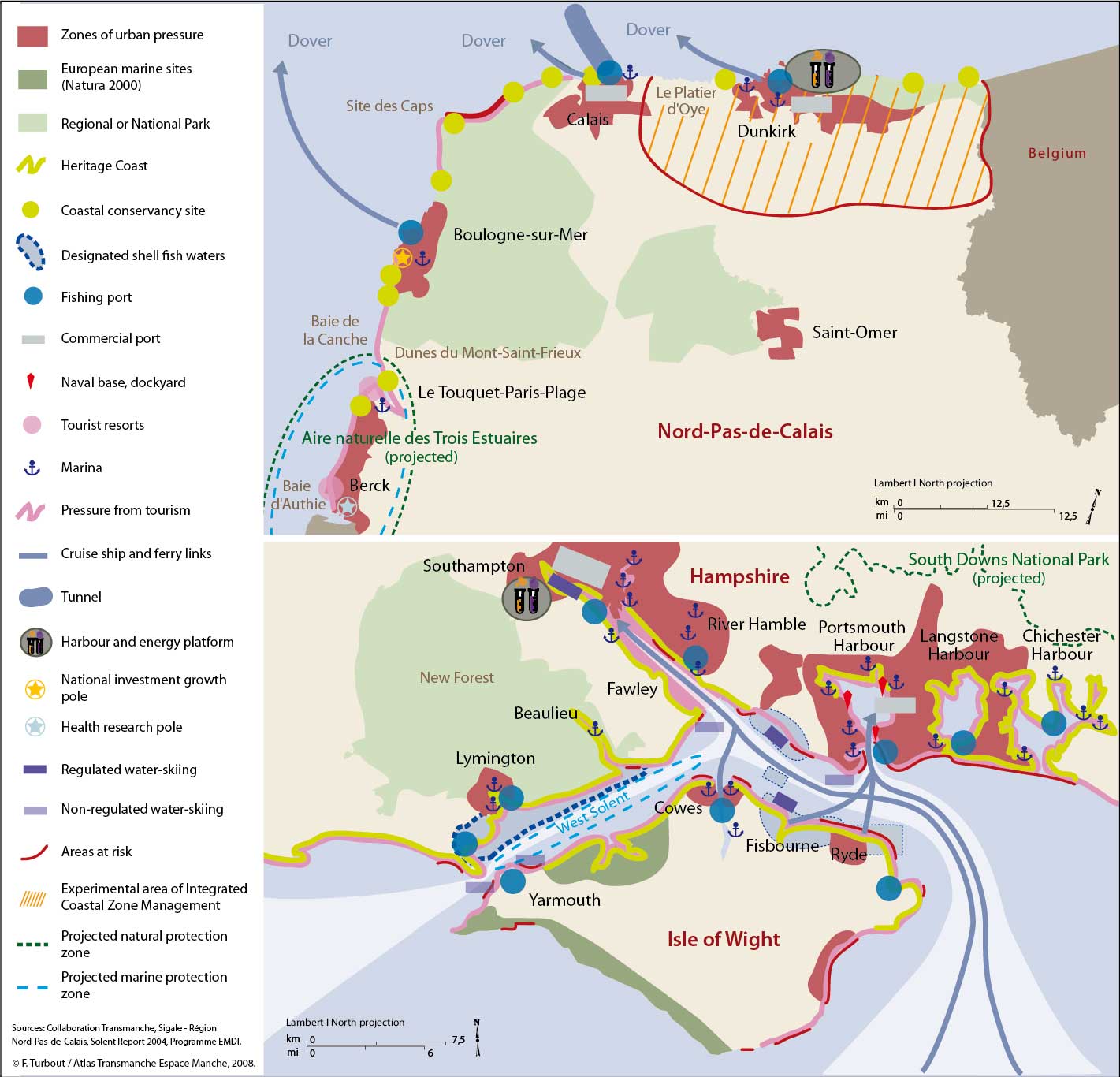

 Coastal Pressure
Coastal Pressure
The accompanying infrastructure providing transport and communications and public utilities like water, sewage and power is everywhere. The strategic and economic importance of a sustainable coastal zone came to the fore at the same time as a general increase in environmental awareness. During the last 15 years this has led to a switch from civil engineering solutions to a greater emphasis on the conservation of natural processes and the restoration of habitats. The large-scale construction of sea-walls in the 19th century to protect coastal development (particularly around tourist resorts) had interfered with long-shore sediment movements that starved beaches further along the coast. The proliferation of marina developments in the late 20th century has brought similar risks of environmental modification. In its 1999 report on Integrated Coastal Zone Management (ICZM), the European Commission concluded that the majority of coastal managment conflicts could be linked to procedural, policy or institutional weaknesses. In the face of increasing conflicts of interest, the planning response on both sides of the Channel has traditionally centred on the zoning of activities. The crucial need for adjoining local authorities to work together to manage their coastal resources holistically has been equally important. The different levels of planning intervention have, however, created an increasingly complex statutory framework and there is a widely held view that there is over-management.
Putting the “I” into “CZM” has been central to recent debates on the coast, as has the problem of defining the coastal zone itself, all too often seen simply as the maritime facade of a terrestrial hinterland rather than a spatially integrated interface of land and sea. The “Loi Littoral” in addition to adopting the principal of “zoning,” exhorted the need for “aménagement en profondeur” that integrates the immediate hinterland. Nowhere are the challenges of integrated coastal zone management better seen than in the Solent, the largest and most intensively used estuarine complex along the south coast of England. With a population of over a million, this distinctive sub-region is, nevertheless, politically fragmented: 26 relevant authorities have statutory duties to control and regulate the wide array of human activities across 12 separately defined estuaries and harbours, covering an area of 36 000 he. The Solent has two large urban agglomerations, Portsmouth (southern England's second largest cross-Channel ferry terminal and active Royal Naval base) and Southampton (the UK's leading cruise port as well as a major international container terminal). With some 34 sites specially protected because of their fragile coastal and maritime habitats, over 25 000 yacht moorings and 30 marinas, a scattering of small fishing ports, numerous heritage sites and tourist attractions, it is not surprising that different activities can easily come into conflict. The plethora of legislation (European, national and local) including over 40 management plans, clearly calls for a more co-ordinated and integrated approach and this has been the mission of Solent Forum since its creation in 1992. The long awaited “Marine Bill” promises to put a better and more simplified regulatory system in place, delivering sustainable development of coastal and maritime environments.
top













